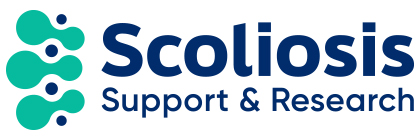The history of treating and diagnosing spinal conditions reaches back to the 5th century BC. This Scoliosis Awareness Month we’re celebrating the impact research has had on the development of the understanding and treatment of scoliosis over the years. Each new development in the history of scoliosis bracing has paved the way for future developments. Getting involved in research now can have a great impact on the future of scoliosis treatment.
In the 16th century they had the Paré brace, which was a padded iron corset, a precursor to the modern spinal orthotic brace.
In the 1870s Sayre described the use of traction in conjunction with a plaster cast to correct and hold spinal curvatures. This method formed the basis for the next generation of techniques used to treat scoliosis.
By 1914, Russell Hibbs had developed a fusion process for halting the progression of spinal curvatures. Some questioned the rationale of halting the progression rather than correcting the curve. In response, Hibbs began preoperative corrections using plaster casting and turnbuckle jackets. Once some correction was achieved, the fusion was performed, and once healed, the patient was again placed in a plaster jacket and kept in bed for six weeks. Once mobile, the patient was required to wear a removable plaster jacket for an additional 6 to 12 months. Hibbs altered the treatment of scoliosis patients forever.
After this came the turnbuckle brace, the Risser Cast, the Milwaukee brace, and the Wilmington Brace. With these developments came more of a focus on preventing the progression of scoliosis and on designs that would be easier for the patient to wear.
Eventually, in 1972, John Hall and orthotist, William Miller created the Boston brace system. They used a prefabricated, symmetric, thoracolumbar-pelvic module that was available in multiple sizes and could be modified for each patient’s size and curvature. The brace corrected the curve through lumbar anti-lordosis and a combination of voids and opposing pressure areas that were positioned according to the curvature characteristics. The Boston brace’s low profile made it more tolerable than the Milwaukee brace to wear and it remains the most widely used type of brace for full-time nonoperative brace treatment of AIS.
Despite the development of the low-profile Boston brace, full compliance with a brace program that demands 18 to 23 hours of daily wear through skeletal maturity is difficult for adolescents. In response to this, some surgeons have questioned the need for full-time wear, modifying designs to increase the corrective forces applied and thereby theoretically diminishing the time needed in the brace per day. Based on this principle, night-time bracing systems were developed to improve patient compliance by reducing the total time in the brace and alleviating the social anxiety created by daytime wear.
The night-time brace is the focus of the BASIS study, currently underway in the UK. The “full-time” brace is the current back brace offered within the NHS, and this is usually prescribed to be worn for 20 hours a day. Although in many patients, it stops the curve reaching a size where surgery would be considered, the brace needs to be worn until growth has finished which is usually several years. It is recognised that this is a very difficult treatment for many young people. The alternative offered as part of the BASIS study, is a new “night-time” brace, which is worn for around 9 hours whilst in bed at night. As this brace works whilst the patient is lying down, it can provide a stronger force to push the curve straighter. Other countries are using this night-time brace but before night-time braces can be used routinely in the UK, we need to check they are as good as the braces we currently use.
The BASIS study is a ‘randomised controlled trial’ This means that the type of back brace given to participants in the study is randomly chosen by a computer, to make sure it is fair and the results can be trusted. 20 NHS Trusts in the UK are currently accepting patients into this trial. If your specialist thinks that either type of brace used in the study will be suitable for you, then they will invite you to take part in this trial.
If you’d like to know more about the study, you can visit the BASIS website for further information. https://basisstudy.org/
The BASIS study is funded by the NIHR Health Technology Assessment (HTA) programme (NIHR131081). The views expressed are those of the author(s) and not necessarily those of the NIHR or the Department of Health and Social Care.
